Office Networking Setup
Enhance productivity and security with a well-planned office network infrastructure for your business operations.
Office Network Setup
Enhance productivity and security with a well-planned office networking infrastructure tailored for your business.
Core Components
Essential hardware includes routers, switches, firewalls, and cabling to ensure a robust network.


Software Services
Utilize network management tools, security software, and cloud services for optimal performance and security.
Consider scalability, security, and user requirements to create an efficient and effective networking environment.
Key Considerations






Teleconferencing Systems
Teleconferencing allows people in different locations to meet electronically and communicate interactively in real-time.
Network Setup
Robust infrastructure enhances productivity and data security for businesses.
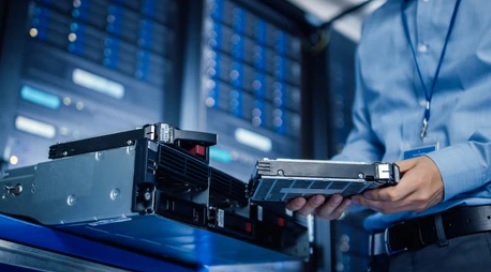

Core Components
Essential hardware for effective office network infrastructure set-up.
Routers: These are essential devices that direct data traffic between different networks (e.g., your office network and the internet). They act as gateways, determining the most efficient path for data packets.
Switches: Switches connect multiple devices within the same network (e.g., computers, printers, servers) to create a cohesive internal communication system. They manage node-to-node communication.
Servers: Powerful computers that store, manage, and process data and applications. They can host files, applications, databases, and more.
Cabling: The physical medium for data transmission.
Ethernet cables (e.g., Cat5e, Cat6, Cat6a): Common for wired connections, offering reliable speed for short to medium distances.
Fiber optic cables: Offer much higher speeds and can cover longer distances, ideal for large buildings or data centers.
Wireless Access Points (WAPs): Enable devices with Wi-Fi capabilities (laptops, smartphones, tablets) to connect to the network by broadcasting a wireless signal.
Modems: Connect your office network to your Internet Service Provider (ISP).
Network Interface Cards (NICs): Essential components in individual devices (computers, printers) that allow them to connect to the network.
Firewalls: Hardware or software-based security systems that monitor and filter incoming and outgoing network traffic, acting as a barrier against unauthorized access and cyber threats.
Endpoint Devices: All the devices that connect to the network, including computers, laptops, printers, IP phones, security cameras, and other IoT devices.
Storage Devices: Hard drives, Solid State Drives (SSDs), Network Attached Storage (NAS) devices for data storage.
Backup Systems: Solutions for data redundancy and recovery.


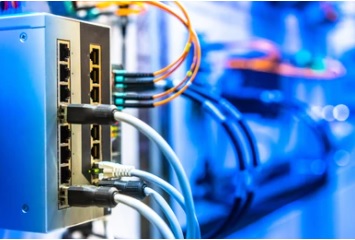

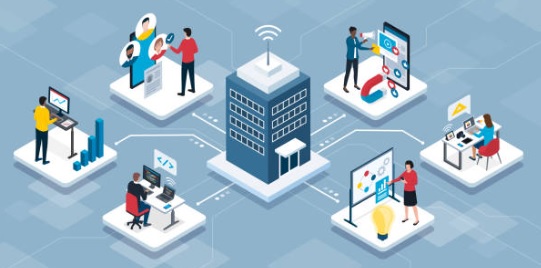

Software Services
Critical software and services for optimized networking performance.
Network Operating Systems (NOS): Software that manages network resources, user accounts, and security policies.
Network Management Software (NMS): Tools for continuous monitoring, configuration, and troubleshooting of network components.
Security Software: Antivirus, anti-malware, intrusion detection/prevention systems (IDS/IPS), encryption.
Internet Connection: High-speed broadband or fiber optic from an ISP.
Virtual Private Network (VPN): Provides secure remote access for off-site employees.
Cloud Services: Integration with cloud computing for flexibility, scalability, and data storage/applications.
DHCP Servers: Automate IP address assignment to devices on the network.
DNS Forwarding: Ensures reliable internet connectivity.
VLANs (Virtual Local Area Networks): Segment the network for better security, performance, and management by creating logical boundaries.
Quality of Service (QoS): Prioritizes business-critical applications (e.g., VoIP, video conferencing) to ensure optimal performance.


Software Services
Critical software and services for optimized networking performance.
Network Operating Systems (NOS): Software that manages network resources, user accounts, and security policies.
Network Management Software (NMS): Tools for continuous monitoring, configuration, and troubleshooting of network components.
Security Software: Antivirus, anti-malware, intrusion detection/prevention systems (IDS/IPS), encryption.
Internet Connection: High-speed broadband or fiber optic from an ISP.
Virtual Private Network (VPN): Provides secure remote access for off-site employees.
Cloud Services: Integration with cloud computing for flexibility, scalability, and data storage/applications.
DHCP Servers: Automate IP address assignment to devices on the network.
DNS Forwarding: Ensures reliable internet connectivity.
VLANs (Virtual Local Area Networks): Segment the network for better security, performance, and management by creating logical boundaries.
Quality of Service (QoS): Prioritizes business-critical applications (e.g., VoIP, video conferencing) to ensure optimal performance.


Types of Teleconferencing
Teleconferencing systems can be categorized based on the type of communication they support:
Audio Conferencing: This is the most basic form of teleconferencing, involving only voice communication. Participants dial into a central conference bridge using a phone (landline or mobile). It's essentially a multi-party conference call. While it lacks visual cues, it is a cost-effective and accessible option for quick discussions or when visual elements are not necessary.
Video Conferencing: This type of teleconferencing adds a visual element, allowing participants to see and hear each other live. It closely replicates the experience of an in-person meeting. Video conferencing can range from one-on-one calls to large-scale, multi-location meetings. It's ideal for formal meetings, presentations, and collaborative sessions where non-verbal communication is important.
Web Conferencing: Also known as web meetings or webinars, this system combines audio and video with additional features. Participants typically use a computer or mobile device with a web browser or dedicated software. Web conferencing platforms often include capabilities like screen sharing, file sharing, text chat, digital whiteboards, and polling. This makes it a powerful tool for collaborative work, training sessions, and large-group presentations.
Audiographics Teleconferencing: This type combines audio communication with the transmission of static visual information, such as graphics, documents, or diagrams. It's often used for distance learning or technical discussions where visual aids are needed to support the verbal conversation.
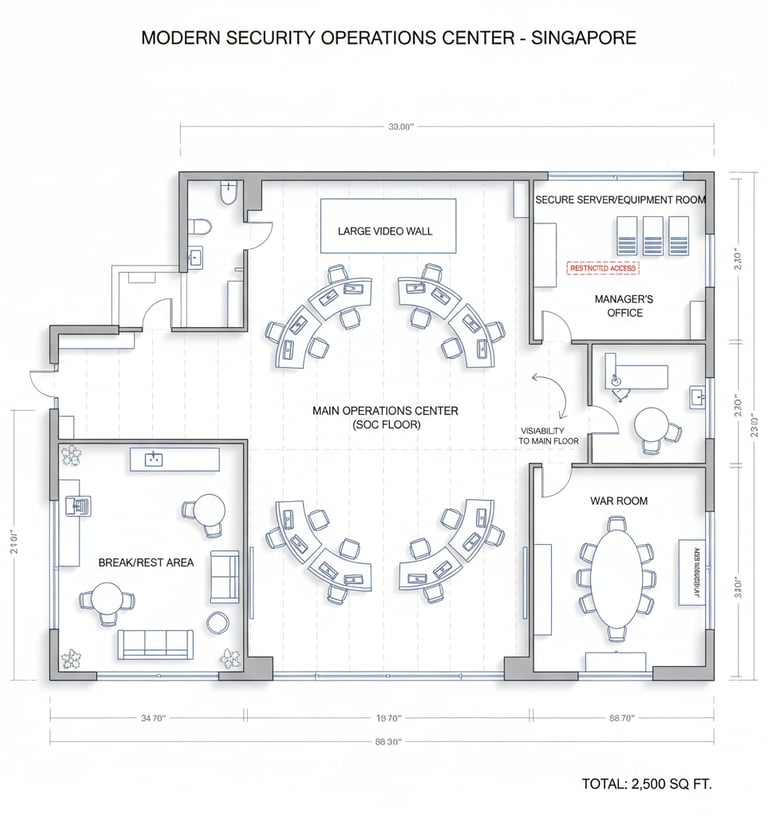

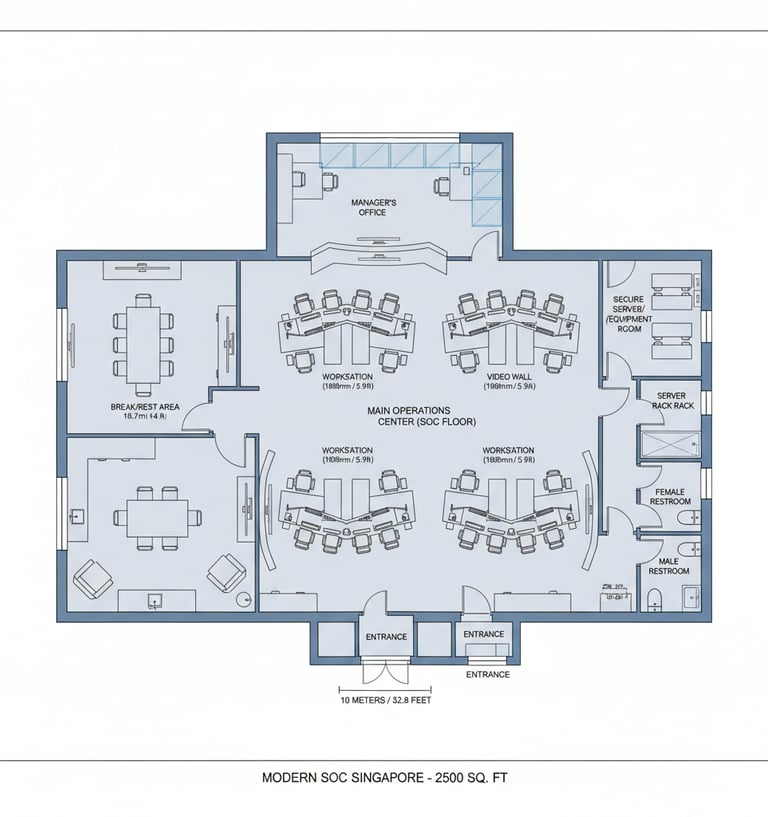

Contact Us for a Quotation Today!
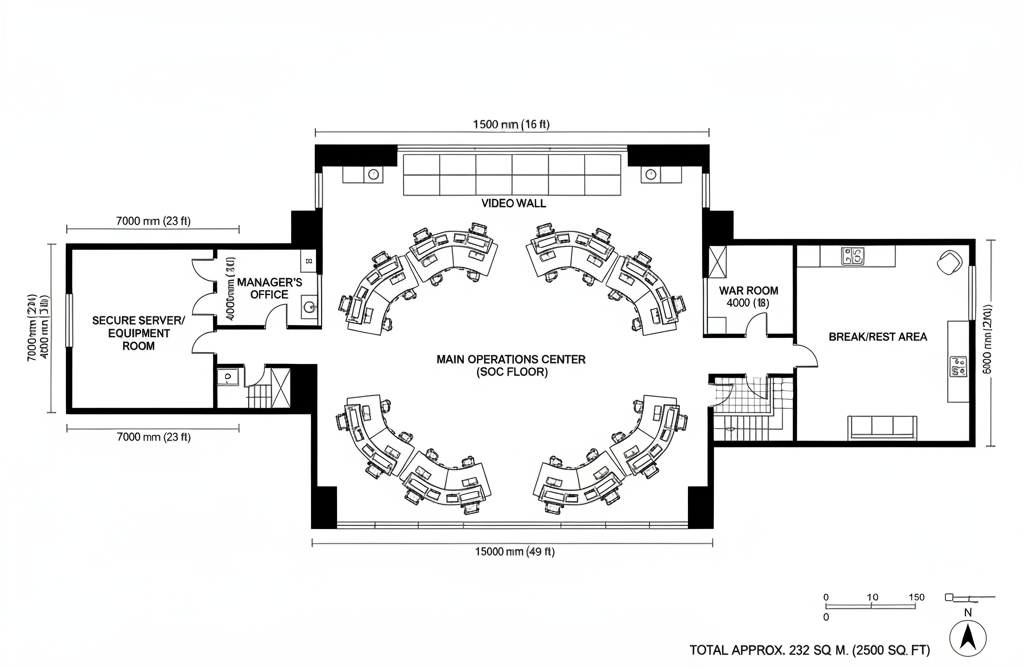

Reach out for expert guidance on office networking infrastructure setup and enhance your business operations.
SERVICES
Expert handyman services for all your needs.
Contact
ABOUT
hello@handyman.sg
+65 8336 6682
Copyright © 2024 Arctic Breeze Engineering| UEN: 53493028W | Terms of Use | Privacy Policy
MAILING OFFICE ADDRESS
Arctic Breeze Engineering
60 Paya Lebar Road
#07-54 Paya Lebar Square
Singapore 409051
Reno Guys Pte Ltd
71 Woodlands Ave 10, #07-10 Woodlands Industrial Xchange, Singapore 737743
+65 6993 8888
aaron@renoguys.com.sg
Visit: www.renoguys.com.sg
FACTORY OFFICE ADDRESS
Contact